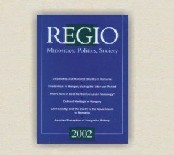Ambivalent Discourse in Eastern Europe
Ambivalent Discourse in Eastern Europe
Author(s): József Lőrincz D.Subject(s): Social Sciences
Published by: MTA Társadalomtudományi Kutatóközpont Kisebbsegkutató Intézet
Keywords: discourse; Hungarians; Romania; parrhesia
Summary/Abstract: Despite the general consensus that transition in Eastern Europe has reached its completion, it seems more difficult to prove on the level of everyday life. In the context of East European transitions, some of the major questions refer to the way this process, the events, and the decisions become interpreted in everyday life; do the values of the new political/economic system become internalized? What is the legitimacy of the political, economic, and social ideals of short-term plans proposed by the elite? Internalization and legitimacy depend only partly on the activity of opinion leaders. Coherent moral rules canonized in different systems became transformed in everyday life into a soft, malleable set of norms, which may be used according to circumstances. The situations, the actions, and the actors may take on different meanings according to the context of the action or of the preceding or ensuing discussion. Ambivalent discourse played, and continues to play an important role in two major spheres of everyday life. On the one hand, it creates and reproduces an acceptable and pragmatic image of oneself and the world. Ambivalent discourse has become constitutive of an acceptable, although “motley” personality, which becomes coherent not through abstract rationalizations, but in practical validity. On the other hand, it can seriously contribute to the management of everyday conflicts (including inter-ethnic conflict), as ambivalent discourse “liberates” us from the exigencies of sincerity, and of plain speech.
Journal: Regio - Minorities, Politics, Society - English Edition
- Issue Year: VII/2004
- Issue No: 1
- Page Range: 148-171
- Page Count: 24
- Language: English

